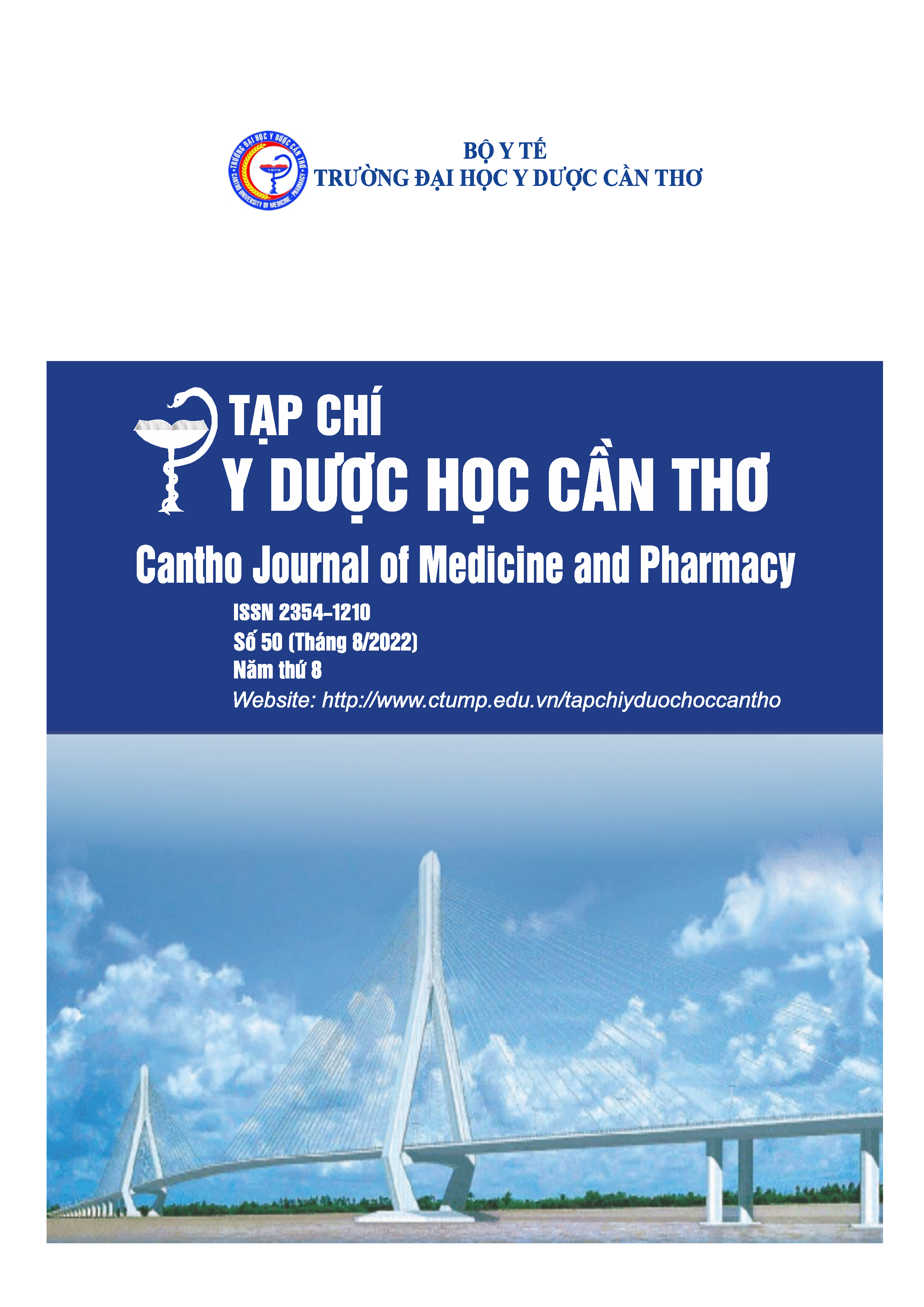THE CLINICAL, LABORATORY CHARACTERISTICS AND RESULTS OF TREATMENT FOR BENIGN PROSTATIC HYPERPLASIA BY TRANSURETHRAL RESECTION OF PATIENT WITH CHRONIC DISEASES AT CAN THO UNIVERSITY OF MEDICINE AND PHARMACY HOSPITAL AND CAN THO GENERAL HOSPITAL
Main Article Content
Abstract
Background: Benign prostatic hyperplasia is a common disease in ageing men. Treatment for benign prostatic hyperplasia by transurethral resection of the prostate is still the “gold standard”. Nowadays, the rate of chronic diseases in the elderly is increasing, especially hypertension, diabetes, chronic obstructive pulmonary disease... These diseases also affect a lots tothe indications for transurethral resection as well as to the outcome of the treatment. That is reasonwhy we have proceeded this research. Objectives: To describe clinical, laboratory characteristics and evaluate the treatment for benign prostatic hyperplasia by transurethral resection of the patient with chronic diseases. Materials and methods: This was a prospective, cross-sectional study, 40 patients with chronic diseases were treated by transurethral resection of the prostate from 3/2021 to 7/2022 in Can Tho University of Medicine and Pharmacy Hospital and Can Tho General Hospital. Results: The most common reason for admission was dysuria 62.5%. Chronic diseases: 1 disease (82.5%), 2 diseases (17.5%), the most common was hypertension (90%). Before surgery, average IPSS was 28.21±4.49, average QoL was 5.38±0.67, average prostate volume was 44.83±14.49ml. After surgery, average IPSS decreased 14.4, average QoL decreased 3.95. Complications: 5% bleeding, 2.5% urinary incontinence, 2.5% urinary retention, 2.5% obstruction of the urethra, 87.5% good results, 12.5% moderate results. Conclusion: Transurethral resection of the prostate achieved good results of treatment; clinical symptoms and quality of life were improved on patients with chronic diseases
Article Details
Keywords
Benign prostatic hyperplasia, transurethral resection of the prostate, chronic disease
References
2. Hội Tiết niệu Thận học Việt Nam (2014), “Hướng dẫn xử trí tăng sinh lành tính tuyến tiền liệt”, Hội Tiết niệu Thận học Việt Nam, Tài liệu lưu hành nội bộ.
3. Trần Ngọc Sinh (2013), “Chỉ định cắt đốt nội soi trong bế tắc đường tiết niệu dưới do tăng sinh tiền liệt tuyến”, Vấn đề của chỉ định cắt đốt nội soi trong điều trị ngoại khoa tăng sinh lành tính tuyến tiền liệt, Nhà xuất bản tổng hợp TP.Hồ Chí Minh, tr.9-12.
4. Trầm Quốc Tuấn (2016), “Nghiên cứu đặc điểm lâm sàng, cận lâm sàng và đánh giá kết quả điều trị bướu lành tiền liệt tuyến bằng phương pháp cắt đốt nội soi tại Bệnh viện Đa khoa Vĩnh Long”, Luận án Chuyên khoa cấp II, Trường Đại học Y Dược Cần Thơ năm 2015-2016.
5. Mai Thế Trạch, Nguyễn Thy Khuê (2007), “Nội tiết học đại cương”, Tập 2, Nhà xuất bản Y học, chi nhánh thành phố Hồ Chí Minh.
6. American Diabetes Association (2010), “Standards of Medical Care in Diabetes – 2010”, Diabetes Care, Vol 33, Suppl 1, pp.11-61.
7. Alper E, Bulent S, Meltem A (2015), “Safety, efficacy and outcome of the new Greenlight XPS 100W laser system compared to the GreenLight HPS 120W System for the treatment of BPH in the prospective non randomized single-centre study”, Can Urol Assoc, 9(1-2), pp.56-60.
8. American Diabetes Association (2010), “Standards of Medical Care in Diabetes – 2010”. Diabetes Care, Vol 33, Suppl 1, pp.11-61.
9. Hanken E, Adem Altun Qal, et al. (2015), “Comparison of Ho: Yag laser and pneumatic lithotripsy combined with transurethral prostatectomy in high burden bladder stone with benign prostatic hyperplasia”, Asian Journal of Surgery, pp.1-5.


